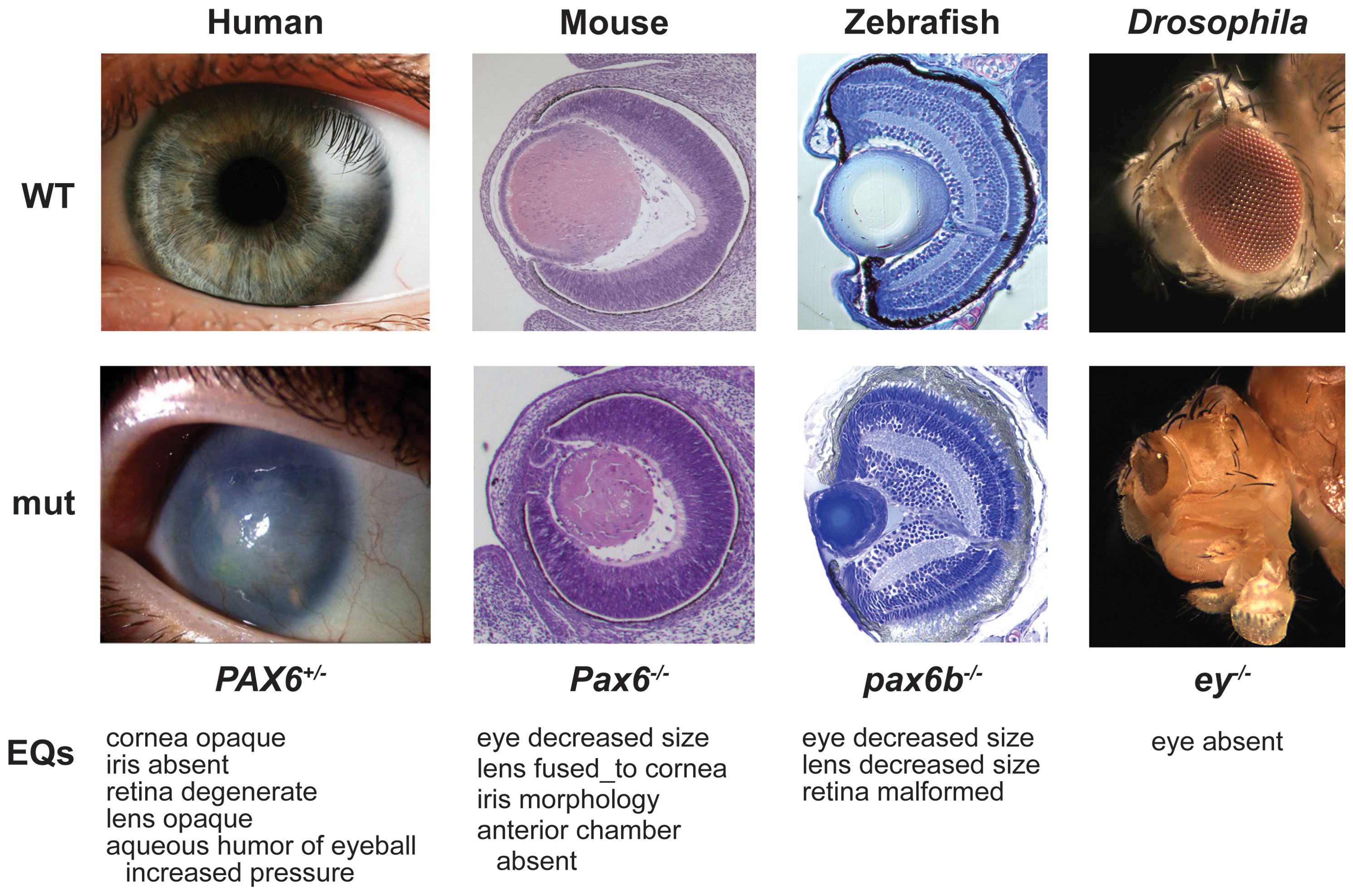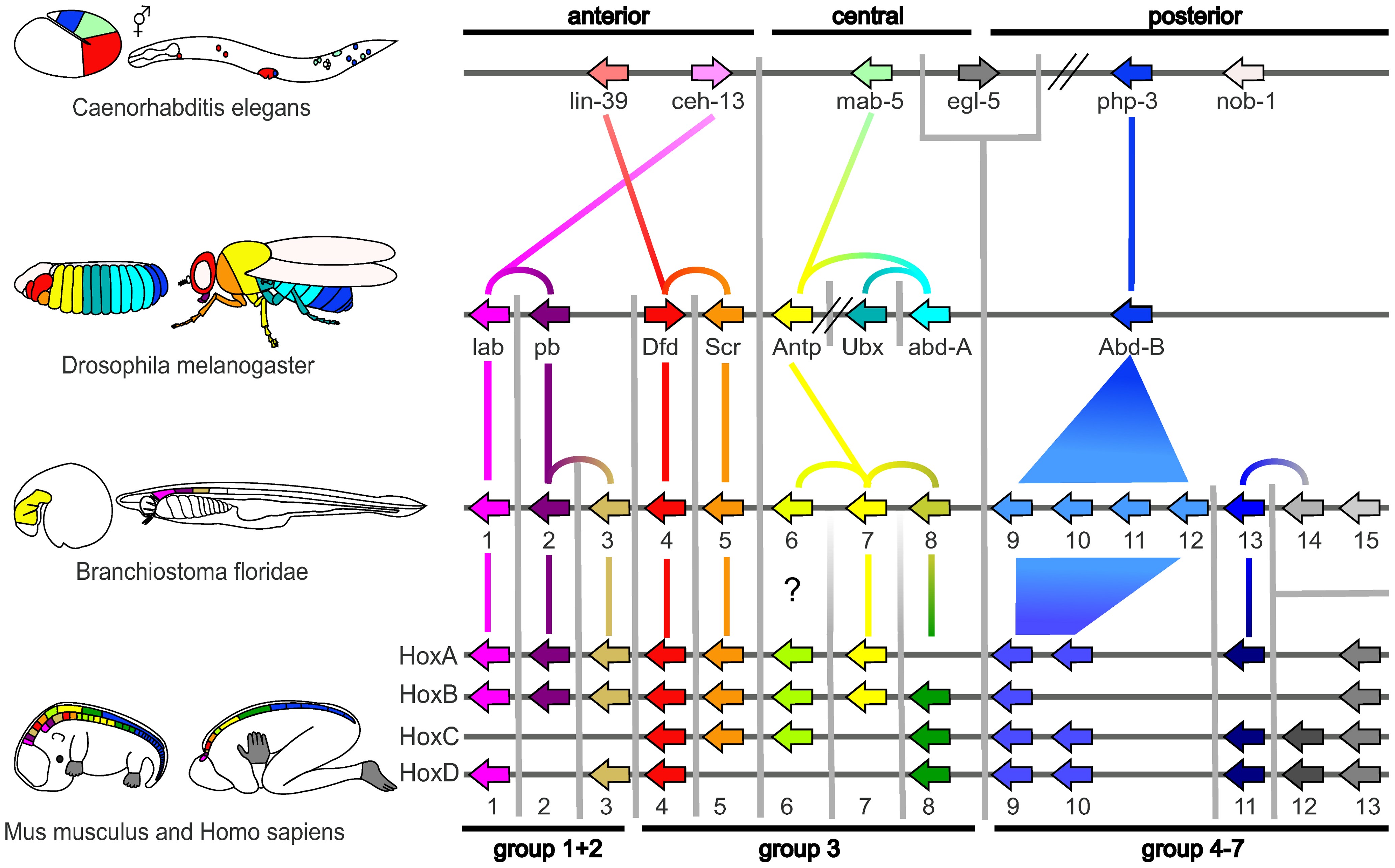deep homology on:
[Wikipedia]
[Google]
[Amazon]
 In
In
 Geoffroy's homology theory was denounced by the leading French zoologist of his day,
Geoffroy's homology theory was denounced by the leading French zoologist of his day,
 In
In evolutionary developmental biology
Evolutionary developmental biology (informally, evo-devo) is a field of biological research that compares the developmental processes of different organisms to infer how developmental processes evolved.
The field grew from 19th-century begin ...
, the concept of deep homology is used to describe cases where growth
Growth may refer to:
Biology
* Auxology, the study of all aspects of human physical growth
* Bacterial growth
* Cell growth
* Growth hormone, a peptide hormone that stimulates growth
* Human development (biology)
* Plant growth
* Secondary growth ...
and differentiation processes are governed by genetic mechanisms that are homologous and deeply conserved across a wide range of species
In biology, a species is the basic unit of Taxonomy (biology), classification and a taxonomic rank of an organism, as well as a unit of biodiversity. A species is often defined as the largest group of organisms in which any two individuals of ...
.
History
In 1822, the French zoologistÉtienne Geoffroy Saint-Hilaire
Étienne Geoffroy Saint-Hilaire (15 April 177219 June 1844) was a French naturalist who established the principle of "unity of composition". He was a colleague of Jean-Baptiste Lamarck and expanded and defended Lamarck's evolutionary theories. ...
dissected a crayfish
Crayfish are freshwater crustaceans belonging to the clade Astacidea, which also contains lobsters. In some locations, they are also known as crawfish, craydids, crawdaddies, crawdads, freshwater lobsters, mountain lobsters, rock lobsters, m ...
, discovering that its body is organised like a vertebrate's, but inverted belly to back (dorsoventrally):
 Geoffroy's homology theory was denounced by the leading French zoologist of his day,
Geoffroy's homology theory was denounced by the leading French zoologist of his day, Georges Cuvier
Jean Léopold Nicolas Frédéric, Baron Cuvier (; 23 August 1769 – 13 May 1832), known as Georges Cuvier, was a French naturalist and zoologist, sometimes referred to as the "founding father of paleontology". Cuvier was a major figure in na ...
, but in 1994, Geoffroy was shown to be correct. In 1915, Santiago Ramon y Cajal mapped the neural connections of the optic lobes of a fly, finding that these resembled those of vertebrates. In 1978, Edward B. Lewis helped to found evolutionary developmental biology
Evolutionary developmental biology (informally, evo-devo) is a field of biological research that compares the developmental processes of different organisms to infer how developmental processes evolved.
The field grew from 19th-century begin ...
, discovering that homeotic genes In evolutionary developmental biology, homeotic genes are genes which regulate the development of anatomical structures in various organisms such as echinoderms, insects, mammals, and plants. Homeotic genes often encode transcription factor proteins ...
regulated embryonic development in fruit flies.
In 1997, the term deep homology first appeared in a paper by Neil Shubin
Neil Shubin (born December 22, 1960) is an American paleontologist, evolutionary biologist and popular science writer. He is the Robert R. Bensley Professor of Organismal Biology and Anatomy, Associate Dean of Organismal Biology and Anatomy and ...
, Cliff Tabin, and Sean B. Carroll, describing the apparent relatedness in genetic regulatory apparatuses which indicated evolutionary similarities in disparate animal features.
A different kind of homology
Whereas ordinary homology is seen in the pattern of structures such as limb bones of mammals that are evidently related, deep homology can apply to groups of animals that have quite dissimilar anatomy: vertebrates (withendoskeleton
An endoskeleton (From Greek ἔνδον, éndon = "within", "inner" + σκελετός, skeletos = "skeleton") is an internal support structure of an animal, composed of mineralized tissue.
Overview
An endoskeleton is a skeleton that is on the ...
s made of bone
A bone is a rigid organ that constitutes part of the skeleton in most vertebrate animals. Bones protect the various other organs of the body, produce red and white blood cells, store minerals, provide structure and support for the body, an ...
and cartilage
Cartilage is a resilient and smooth type of connective tissue. In tetrapods, it covers and protects the ends of long bones at the joints as articular cartilage, and is a structural component of many body parts including the rib cage, the neck a ...
) and arthropods (with exoskeleton
An exoskeleton (from Greek ''éxō'' "outer" and ''skeletós'' "skeleton") is an external skeleton that supports and protects an animal's body, in contrast to an internal skeleton ( endoskeleton) in for example, a human. In usage, some of the ...
s made of chitin
Chitin ( C8 H13 O5 N)n ( ) is a long-chain polymer of ''N''-acetylglucosamine, an amide derivative of glucose. Chitin is probably the second most abundant polysaccharide in nature (behind only cellulose); an estimated 1 billion tons of chit ...
) nevertheless have limbs that are constructed using similar recipes or "algorithms".
Within the metazoa
Animals are multicellular, eukaryotic organisms in the biological kingdom Animalia. With few exceptions, animals consume organic material, breathe oxygen, are able to move, can reproduce sexually, and go through an ontogenetic stage i ...
, homeotic genes control differentiation along major body axes, and pax genes
Pax or PAX may refer to:
Peace
* Peace (Latin: ''pax'')
** Pax (goddess), the Roman goddess of peace
** Pax, a truce term
* Pax (liturgy), a salutation in Catholic and Lutheran religious services
* Pax (liturgical object), an object formerly ki ...
(especially PAX6
Paired box protein Pax-6, also known as aniridia type II protein (AN2) or oculorhombin, is a protein that in humans is encoded by the ''PAX6'' gene.
Function
PAX6 is a member of the Pax gene family which is responsible for carrying the genet ...
) help to control the development of the eye
Eyes are organs of the visual system. They provide living organisms with vision, the ability to receive and process visual detail, as well as enabling several photo response functions that are independent of vision. Eyes detect light and con ...
and other sensory organ
A sense is a biological system used by an organism for sensation, the process of gathering information about the world through the detection of stimuli. (For example, in the human body, the brain which is part of the central nervous system rec ...
s. The deep homology applies across widely separated groups, such as in the eyes of mammals
Mammals () are a group of vertebrate animals constituting the class Mammalia (), characterized by the presence of mammary glands which in females produce milk for feeding (nursing) their young, a neocortex (a region of the brain), f ...
and the structurally quite different compound eye
A compound eye is a visual organ found in arthropods such as insects and crustaceans. It may consist of thousands of ommatidia, which are tiny independent photoreception units that consist of a cornea, lens, and photoreceptor cells which disti ...
s of insects
Insects (from Latin ') are pancrustacean hexapod invertebrates of the class Insecta. They are the largest group within the arthropod phylum. Insects have a chitinous exoskeleton, a three-part body (head, thorax and abdomen), three pairs of ...
.
Similarly, hox gene
Hox genes, a subset of homeobox genes, are a group of related genes that specify regions of the body plan of an embryo along the head-tail axis of animals. Hox proteins encode and specify the characteristics of 'position', ensuring that the co ...
s help to form an animal's segmentation pattern. HoxA and HoxD, that regulate finger and toe formation in mice, control the development of ray fins in zebrafish
The zebrafish (''Danio rerio'') is a freshwater fish belonging to the minnow family (Cyprinidae) of the order Cypriniformes. Native to South Asia, it is a popular aquarium fish, frequently sold under the trade name zebra danio (and thus often ...
; these structures had until then been considered non-homologous.
There is a possible deep homology among animals that use acoustic communication, such as songbirds and humans, which may share unmutated versions of the FOXP2
Forkhead box protein P2 (FOXP2) is a protein that, in humans, is encoded by the ''FOXP2'' gene. FOXP2 is a member of the forkhead box family of transcription factors, proteins that regulate gene expression by binding to DNA. It is expressed i ...
gene.
Algorithm
In 2010, a team led by Edward Marcotte developed analgorithm
In mathematics and computer science, an algorithm () is a finite sequence of rigorous instructions, typically used to solve a class of specific problems or to perform a computation. Algorithms are used as specifications for performing ...
that identifies deeply homologous genetic modules in unicellular organisms, plants, and animals based on phenotype
In genetics, the phenotype () is the set of observable characteristics or traits of an organism. The term covers the organism's morphology or physical form and structure, its developmental processes, its biochemical and physiological prop ...
s (such as traits and developmental defects). The technique aligns phenotypes across organisms based on orthology (a type of homology) of genes involved in the phenotypes.
References
See also
* {{annotated link, Body plan Evolution by phenotype Evolutionary biology Taxonomy (biology) Phylogenetics Evolutionary developmental biology